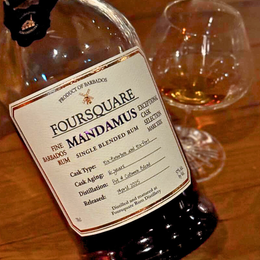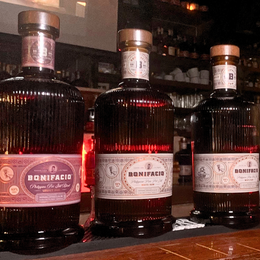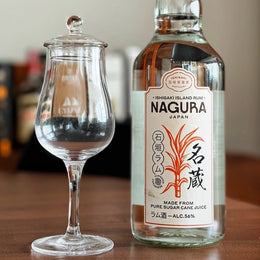
The last of the @velierspa Flora Antillarum tastings was also the oldest - the @rhum_montebello 2002, distilled at the eponymous distillery in Petit-Bourg, Guadeloupe.
The distillery itself was first founded in 1930 by Auguste Clément Dolomie, and was named Carrère Distillery then, after the name of the district where the distillery was located. Yet the owners of the distillery today, the Marsolle family, and their origins to the rhum industry date further back to 1892 when Charles Jacques-Edouard Marsolle acquired Domaine de la Lise in Bouillante and started distilling rhum.
It was not until 1966 when Jean Marsolle and his son, Alain, purchased the Carrère distillery and began modernising its equipment, and in 1975 named the distillery Montebello. Since then, the family has continued to be involved in its rhum production, and is today managed by Grégory and Dominique Marsolle. As with most distilleries on the French Caribbean islands, Montebello uses column stills for distillation of its spirits.
Interestingly in their rum production process, Montebello practices a “reduction and brewing” stage between distillation and aging. Once distilled, the rum is rested in steel vats for several months, and gradually reduced with water until it reaches its desired abv. This is rather different from the usual practice where dilution occurs only after the aging process.
Another interesting practice in Montebello’s production process is its aging, where the rums are all matured in shipping containers after being filled in casks, of which 90% of the casks used are ex-bourbon barrels. What this results in is a higher humidity level which expedites the maturation process, resulting in young rums that appear rounder, more complex, and more intense than its actual age.
After that long spiel, its time to look at the rum we have today, which is a blend of agricole and molasses rums, matured fully in the tropics in 350 litre ex-bourbon and ex-cognac casks since 7 February 2002, and bottled at cask strength of 41.3% abv with an outturn of 482 bottles.
On the nose, the Montebello was a really unique one. It resembled preserved sour plums, a hint of dried orange peels, and also carried a rather pungent spicy note, almost like red chillies. There were little hints of vanilla, a bit baking spices too, probably stemming from the cask influence which was expected given 19 years in the tropics, although it did feel slightly thin.
The palate was distinctively one of an agricole, much more herbal and grassy. I don’t really know what the ratio of agricole to molasses rums was, but I clearly got a sense that the agricoles were far more dominant in this one. Just as the nose, the palate too had a bit of sour plums, that same dried orange peels, coupled with a side of vanilla, dark chocolates, and some of that dryness stemming from the wood that went on into the medium length finish.
Looking across the three rums I’ve tasted from the series, I’d say they all are very distinctively different despite originating from the same island. It showcased the unique styles of each distilling house, how their varying practices contributed to such vastly different flavour profiles, and more importantly, it was a great introduction to those who have yet to explore rums from the island of Guadeloupe.
Image Courtesy of @weixiang_liu









